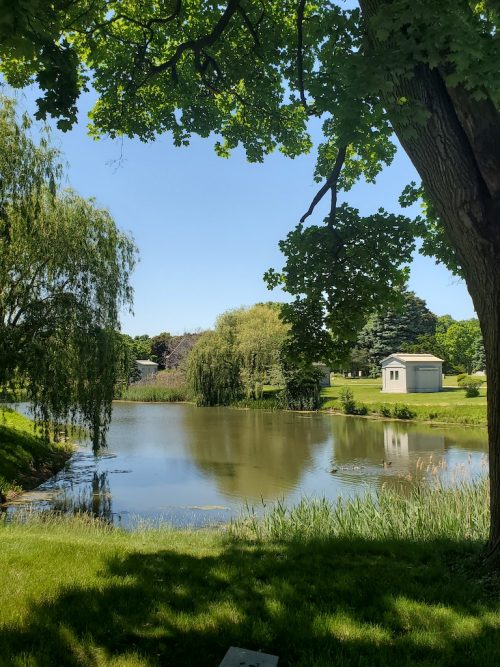
BY JUDY CARMACK BROSS
Some say that it’s a Southern custom to wander in cemeteries, but as home to a multitude of historically important and truly beautiful resting places, roving and remembering make for a stirring Chicago afternoon.

Summer at Rosehill.
Rosehill, the city’s largest cemetery at 335 acres, offers beauty at any season, legendary leaders, wildlife, and a peaceful opportunity for introspection. Also one of Chicago’s oldest cemeteries, its markers and monuments tell of heroes, generals, business barons, politicians, and beloved citizens alike. Designed in the style of a Victorian garden cemetery with an abundance of green space, you can choose to drive through or walk around the grounds. Whether by car or by foot, a visit invites contemplation and Chicago pride.

Misty view.
There have been over 190,000 interments since Rosehill’s founding in 1859. As its weekly tour groups and individual visitors discover, you’ll find within its grounds the graves of Ignaz Schwinn; Oscar Mayer; Jack Brickhouse; Frances Willard; Leo Burnett; Chicago’s first public school teacher, Eliza Chappell Porter; a dozen Chicago mayors; 20 Union generals from the Civil War; and so many others.
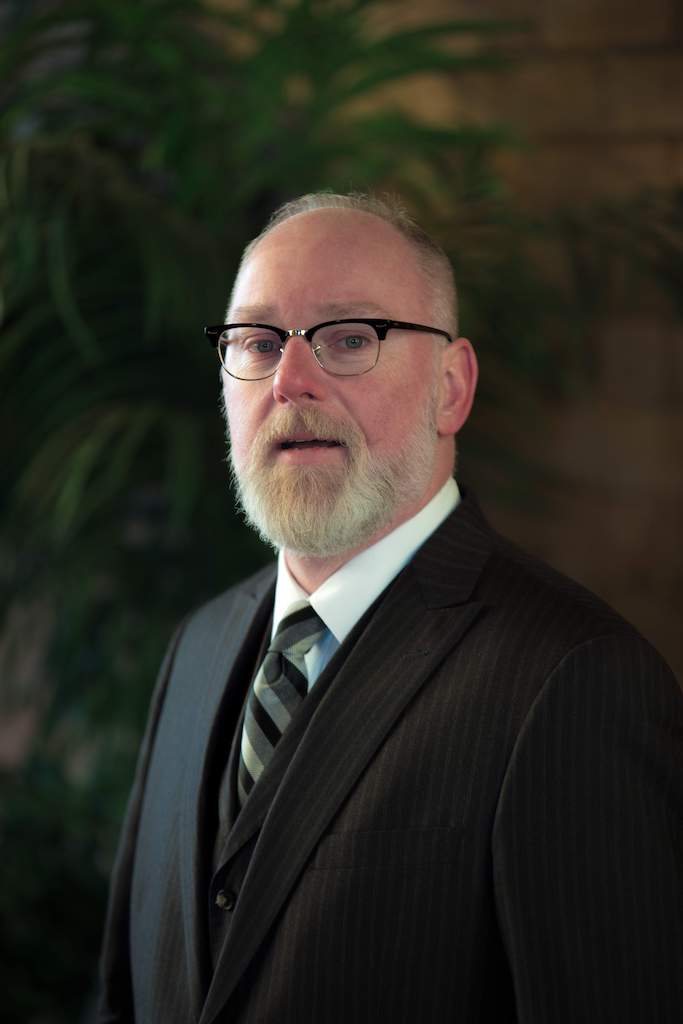
Mike Weidman.
Michael Weidman, Dignity Memorial Family Service Manager, suggests that visitors “walk, recreate, visit, and be inspired by other people’s lives.” He believes the best compliment that you can pay those buried there is to take the time that you still have to live well.
Entering its castellated gothic gate on Ravenswood Avenue—familiar in style because it was designed by William Boyington, the architect of the Water Tower—you see the newly refurbished bell tower. Currently attracting many visitors, the restoration was accomplished by the Rosehill Cemetery Reserve Fund, established in 1863. The fund works with the owner of Rosehill to undertake projects not normally covered by general operations.

Main Gate and Bell Tower.
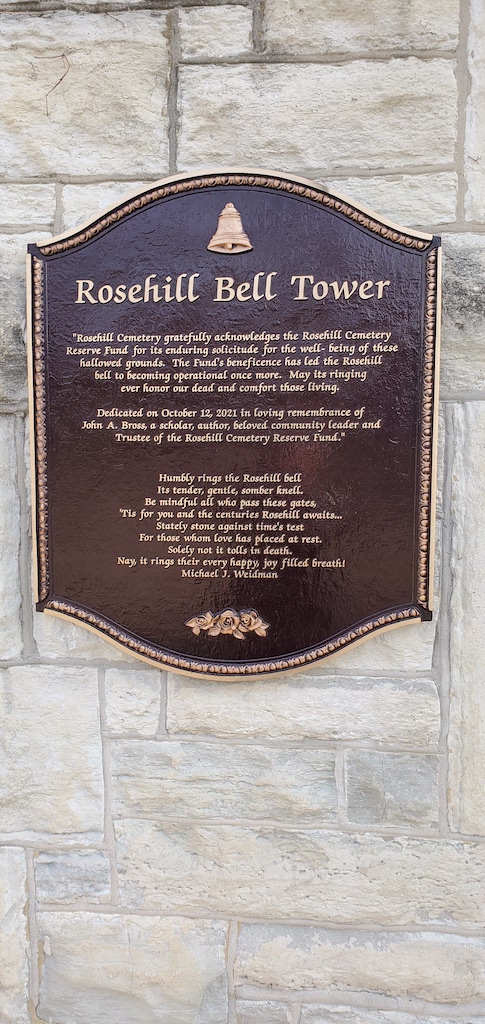
Bell Tower dedication plaque.
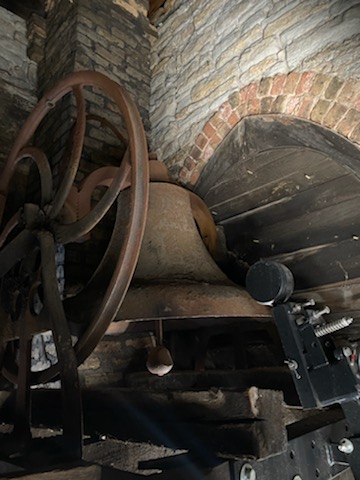
Bell, wheel, and electric automated striker.
The sonorous chimes now sound throughout the day with nine solemn tolls at 9 p.m. to mark the close of the day and serve as remembrance of the dead. As funeral processions enter through the main gate and make their way onto the grounds, the bell, upon signal, will ring the funeral toll: one toll every ten seconds for five minutes.
Noted philanthropist Jim Alexander recently retired as chair of the Board of Trustees of the Reserve Fund and Clark Fetridge has assumed that post. Alexander, whose ancestors, beginning with Edwin M. Ashcraft, founder of the noted law firm of Ashcraft & Ashcraft, are buried at Rosehill, remembers visiting the cemetery as a 10-year-old: “Rosehill tells so well the history of our city and reflects its challenges. It is very much representative of those who have lived and died in Chicago. We have activists and those who celebrated the status quo buried side-by-side. It is also a living, breathing testament to the wonders and joys of life, even in the face of inevitable death.”

Jim Alexander.
He continues, “Board members of the Reserve Fund recently went to Springfield to amend and update our Charter, allowing the board to self-elect its members and to manage its assets more flexibly and in accordance with modern investment theory. We are very grateful to Illinois Senator Heather Steans for her help in getting our Charter, well over 150 years old, amended.”
Fetridge says, “We have a fund, contributed to by people who love Rosehill, which enables us to do things to make sure the cemetery is kept up properly. Whether it is planting trees along family plots or fixing the curb off at the Ravenswood entrance, we can take on projects through our endowment. We are in partnership with families.”
“My grandfather, who was born in the 1870s, died in 1952 and is buried at Rosehill. I can remember coming here as a child with my mother to visit his grave and being fascinated with the place,” he adds. “Now my parents and my wife, Jean, are buried here, and I visit them. The ponds, the beautiful trees, deer often standing just 10 feet away—I find it very relaxing. There are always lots of joggers and walkers. I sometimes drive by the grave of Illinois Governor Stratton and say hello. He was a friend of my parents.”

Cremation Garden in summertime.

Winter visitors.
At the beginning of the Civil War, the directors donated to the military plots for the burial of U.S. soldiers, many of which you will find near the front gate of Rosehill. Weidman says, “In the last 28 years, we have worked to repair and replace the original sandstone headstones, which were no longer readable. There are 15 unknown Civil War soldiers buried here.”
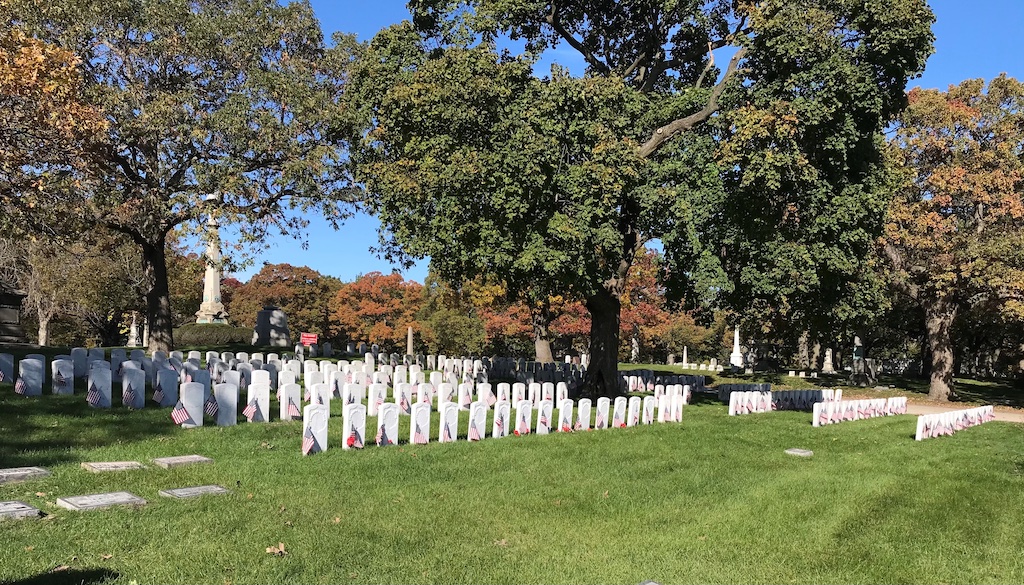
Section A, Civil War soldiers.
Real estate developer Charles Hull, for whom Hull House is named, and Montgomery Ward, who came from humble origins and clerked for Marshall Field, have a particular interest for Weidman: he calls Montgomery War’s retail operation the “Amazon of his day.”
One of the most frequent stops on any tour is the monument honoring “all the Courageous Volunteer Firefighters of Chicago,” erected in 1864. Designed by Leonard Volk, it features a vigilant fireman with a fire hose wrapped around the column and hydrants at the base.

Firefighters Memorial.
A variety of symbols are found throughout Rosehill: “At one time the obelisk, the Egyptian solar symbol of regeneration and creation, was very popular. Chicago Mayor Long John Wentworth, who stood over 6’6” requested a 60-foot-tall obelisk, which for many years was the largest tombstone in the Midwest,” Weidman explains.
Many of the oldest graves at the front are of Scots who moved to Chicago. Board member Gus Noble, President of the Chicago Scots and Caledonia Senior Living and Memory Care, shares, “The Scottish Society bought land within Rosehill before it was formally established. It was their policy that no deserving indigent Scot should go without medical care and a decent burial. These are some of the oldest graves at the front of the cemetery. There are many Scottish captains of industry who are buried here as well.” More than 600 people of Scottish descent are currently buried on Rosehill grounds.
Noble, who received an OBE from Queen Elizabeth for his service to Scottish culture in the United States, brings his children to Rosehill for picnics and to tell them more of its history: “During COVID, it was one of the few places you could go, and I think it saved my mental health during the lockdown. We came as a family to pay our respects but also to tell the children about the people there. My children say frequently, ‘Tell me the story again about that person.’ It really creates a sense of wonder.”
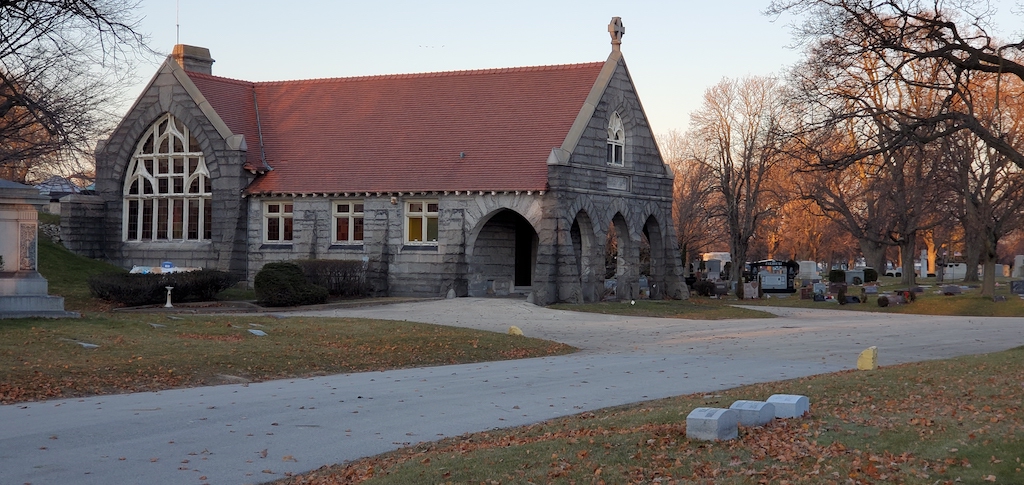
May Chapel at dusk.
One of the Noble family’s favorite Rosehill destinations is the Horatio May Chapel by Joseph Silsbee, who also designed the May’s home at 1443 Astor Street. May’s wife, Anna, commissioned the chapel for her husband, a businessman and city controller, in 1899.
“Anna was a most forward-thinking woman,” Weidman says. “She lobbied for a tunnel to be built under the Chicago River to divert traffic going to the World’s Fair of 1893. It would have been built just east of Rush Street and rise again at Michigan and Randolph. She also was a volunteer inspector of streets and cleanliness for the 21st Ward.”
The Rosehill Mausoleum, featuring magnificent Tiffany windows, was the first of several mausoleums designed by architect Sidney Lovell. Opened in 1914 it has been enlarged eight times and contains approximately 13,000 crypts and niches and two chapels. Retailers Richard Warren Sears, Aaron Montgomery Ward, Milton Florsheim, and Charles A. Stevens are interred there, along with John G. Shedd, successor of Marshall Field and founder of the Shedd Aquarium; industry leaders like Edward Swift, Arthur Rubloff, Leopold Block, and Henry Crown; and ratings genius Arthur Charles Nielsen.

The mausoleum’s original main entrance.

Shedd Interment Chapel.
Although its vast grounds take several visits to fully explore, Rosehill and its myriad monuments and mythic figures await.
Rosehill Cemetery
5800 N. Ravenswood Avenue
Monday to Saturday, 8:00 a.m. to 5:00 p.m.
Sunday, 9:00 a.m. to 4:00 p.m.
The entrance’s office will supply gravesite information


